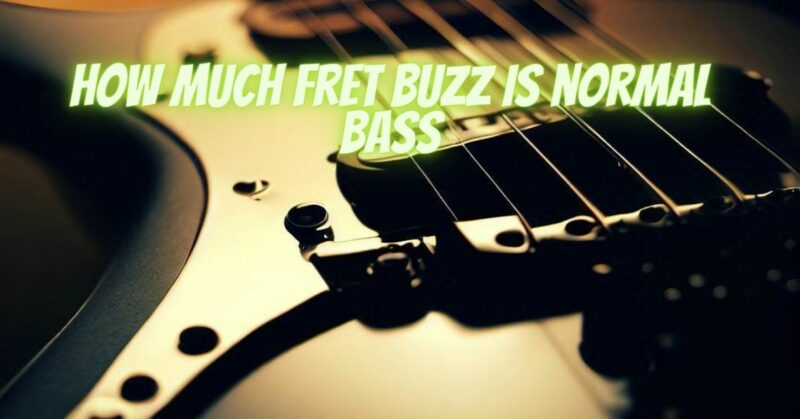Fret buzz is a common concern among bass guitarists, and understanding its occurrence and significance is essential for maintaining optimal playability and tone. In this article, we’ll explore what fret buzz is, how much fret buzz is considered normal, and when it may be necessary to take action to address the issue.
What is Fret Buzz?
Fret buzz occurs when a vibrating string comes into contact with a fret or multiple frets on the fretboard, resulting in an unwanted buzzing or rattling sound. Fret buzz can happen on any bass guitar, and its severity may vary depending on several factors.
Factors Influencing Fret Buzz:
Several factors can contribute to fret buzz on a bass guitar:
- String Action: String action refers to the distance between the strings and the fretboard. Lower action (closer to the fretboard) can increase the likelihood of fret buzz, while higher action provides more clearance between the strings and the frets, reducing buzzing.
- Truss Rod Adjustment: The truss rod helps control the curvature of the neck. An incorrectly adjusted truss rod can result in a back-bowed or forward-bowed neck, leading to fret buzz.
- Fret Leveling: Uneven or worn frets can cause buzzing when the strings come into contact with the uneven fret surface.
- String Gauge: Lighter gauge strings may be more prone to fret buzz due to their lower tension compared to heavier gauge strings.
- Playing Technique: The way a bassist frets the strings and applies pressure while playing can influence fret buzz. A light touch and proper finger placement can help minimize buzzing.
Normal Amount of Fret Buzz:
Some degree of fret buzz may be present on a bass guitar, especially on lower frets and when playing aggressively. In general, a small amount of fret buzz that does not significantly affect playability or tone can be considered normal.
When to Take Action:
While some fret buzz may be expected, there are situations when it’s essential to take action to address the issue:
- Excessive Fret Buzz: If the buzzing is severe and affects the clarity of the notes or interferes with the bassist’s playing, it’s necessary to address the problem.
- Inconsistent Buzzing: If fret buzz is only occurring on specific frets or strings, it may indicate uneven frets or an issue with the setup that requires adjustment.
- Buzz on Open Strings: Buzzing on open strings, especially when not being played, can be an indication of setup or neck relief problems.
- Changes in Buzzing: If you notice a sudden increase in fret buzz or a change in buzzing behavior, it may indicate a need for adjustment or maintenance.
Fret buzz is a common occurrence on bass guitars, and a small amount of buzzing may be considered normal, especially on lower frets or when playing aggressively. However, excessive or inconsistent fret buzz that affects playability and tone should not be ignored. Proper setup, maintenance, and adjustments, such as optimizing string action, truss rod adjustments, and fret leveling, can help minimize fret buzz and ensure optimal playability and tone on your bass guitar. If you’re uncertain about addressing fret buzz yourself, seek assistance from a professional guitar technician or luthier who can optimize your bass guitar’s setup and keep it performing at its best. Happy playing!


